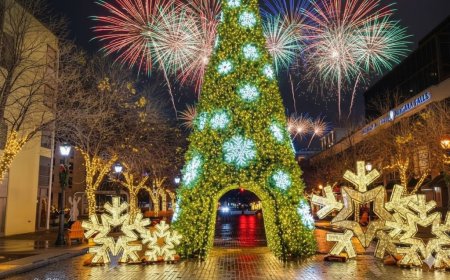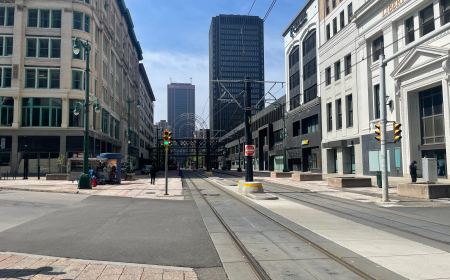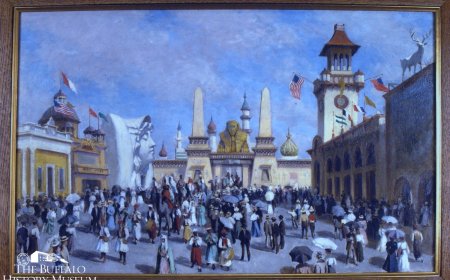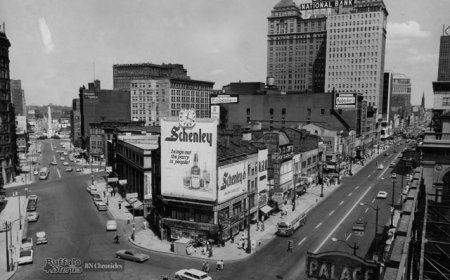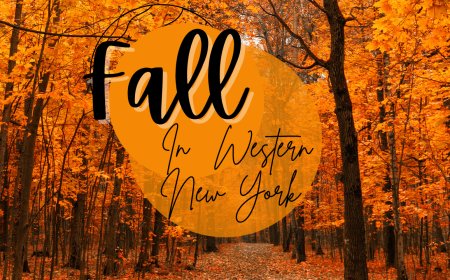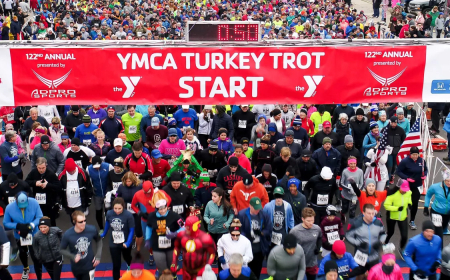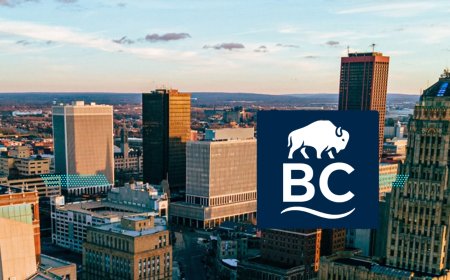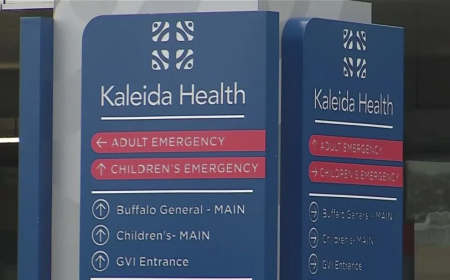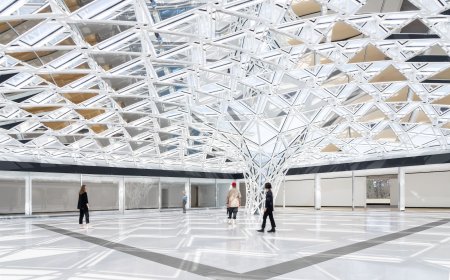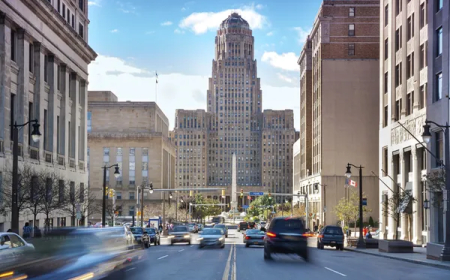Hidden Histories of Buffalo’s Underground Railroad
Hidden Histories of Buffalo’s Underground Railroad" explores Buffalo, NY’s crucial role as a final stop on the Underground Railroad, highlighting lesser-known stories of courage and resistance. From the Michigan Street Baptist Church’s secret safe houses to the Erie Canal Harbor Station’s role in ferrying freedom seekers to Canada, the article uncovers WNY’s contributions through sites and abolitionist heroes like William Wells Brown and the Cataract House waiters. It celebrates Buffalo’s multicultural legacy and calls for preserving these vital stories.
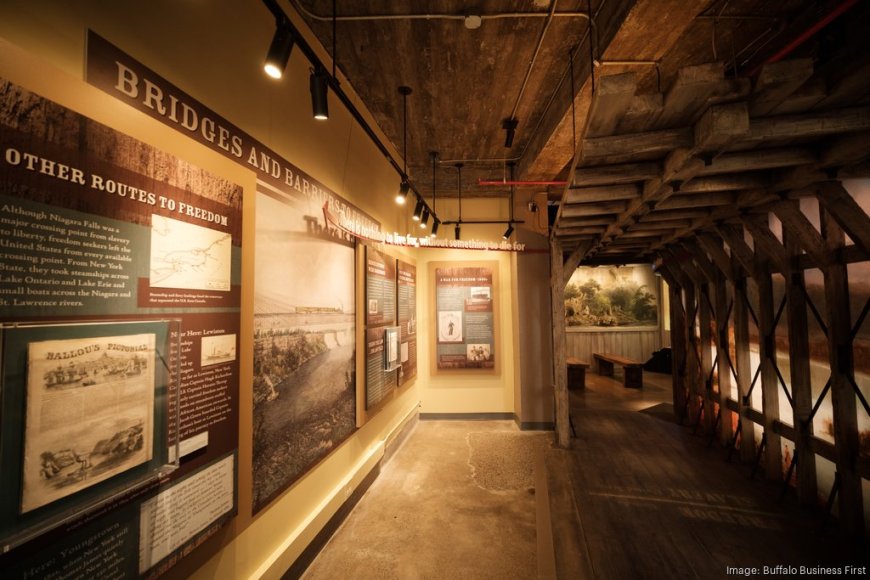
Buffalo, New York, is celebrated for its wings, snowstorms, and Bills fandom, but beneath its modern identity lies a profound and often overlooked chapter in American history: its pivotal role in the Underground Railroad. As a border city just across the Niagara River from Canada, Buffalo was a critical final stop for enslaved African Americans seeking freedom in the mid-1800s. Sites like the Erie Canal Harbor Station and the courage of local abolitionist heroes shaped Western New York (WNY) into a beacon of hope. This article uncovers lesser-known stories of Buffalo’s Underground Railroad, spotlighting the places and people who risked everything to help freedom seekers escape slavery.
Buffalo’s Strategic Role in the Underground Railroad
Buffalo’s proximity to Canada, where slavery was abolished by 1834, made it a vital hub in the Underground Railroad—a clandestine network of routes and safe houses that guided enslaved people to freedom. The city’s location along the Niagara River and its connection to the Erie Canal, completed in 1825, provided both geographical and logistical advantages. The canal, stretching from Albany to Buffalo, was not just a trade route but a pathway to liberation, with packet boats and towpaths offering discreet passage for freedom seekers.
No single site encapsulates Buffalo’s role more than the Michigan Street Baptist Church, built in 1845 by African Americans. This historic church, still standing on Buffalo’s African American Heritage Corridor, served as a safe house where escapees hid in rafters and basement crawlspaces. Bishop William Henderson, a former pastor, recounted how congregants tended to the wounds of those who had walked for weeks, often barefoot, before smuggling them across the Niagara River under cover of rainy nights. The church’s secrecy was so effective that no fugitive was ever discovered there, a testament to the community’s vigilance.
Erie Canal Harbor Station: A Gateway to Freedom
The Erie Canal Harbor Station, listed on the National Register of Historic Places, was a lesser-known but crucial stop on the Underground Railroad. Located at Buffalo’s waterfront, it served as a transfer point where freedom seekers could board boats to cross into Canada. The station’s bustling activity provided cover for covert operations, with abolitionists disguising escapees as cargo or passengers. Local Native Americans often played a vital role, paddling runaways across the Niagara River when ferries were unavailable, leveraging their knowledge of the waterways to evade bounty hunters.
The Erie Canal itself was a lifeline for the Underground Railroad. Freedom seekers arriving from New York City or Albany via steamboats would transfer to packet boats in Buffalo, blending in with passengers to reach Canada. Abolitionists like Frederick Douglass and Harriet Tubman, who frequented WNY, relied on the canal’s network of safe houses and sympathetic boat operators to ensure safe passage. The canal’s role underscores Buffalo’s position as a “funnel” for freedom, channeling escapees toward the Canadian border.
Unsung Abolitionist Heroes of Buffalo
Buffalo’s Underground Railroad was powered by courageous individuals, both Black and white, who risked imprisonment or worse under the Fugitive Slave Act of 1850, which mandated the return of escaped slaves. Among them was William Wells Brown, a formerly enslaved man who became a prominent abolitionist and orator. In 1842, while working on a Lake Erie steamboat, Brown helped 69 fugitives escape to Canada, using his position to ferry them across the border. A parishioner at the Michigan Street Baptist Church, Brown’s activism extended to public speaking and writing, making him one of Buffalo’s most impactful yet underrecognized figures.
Another unsung hero was the family of Father Nelson Baker, a Buffalo grocer whose downtown store secretly directed escapees to the Michigan Street Baptist Church. Baker, later a revered priest and candidate for sainthood, exemplified the diverse coalition of Buffalonians who opposed slavery. A city court judge also played a subtle but critical role, deliberately delaying legal proceedings to frustrate bounty hunters, giving conductors time to move fugitives to safety.
Black waiters at Niagara Falls’ Cataract House, a now-demolished hotel, were secret agents of the Underground Railroad. Posing as staff, they coordinated escapes, guiding fugitives to boats or safe houses. Their work highlights the significant contributions of African Americans in Buffalo’s network, challenging the narrative that the Underground Railroad was primarily a white-led effort.
Hidden Sites and Lasting Legacies
Beyond the Michigan Street Baptist Church and Erie Canal Harbor Station, other WNY sites played critical roles. Broderick Park, at the foot of Ferry Street, was a key crossing point where freedom seekers boarded boats to Canada. Today, a small plaque marks its significance, but its story remains underpublicized. In Niagara County, the McClew Farm (now Murphy’s Orchards) near Newfane hid escapees in its barn, operated by abolitionist Charles McClew. These sites, often marked by modest memorials or none at all, reflect the challenge of preserving Underground Railroad history, as secrecy was essential to its success.
The Niagara Falls Underground Railroad Heritage Center, opened in 2018, brings these stories to life with exhibits on the Cataract House waiters and Harriet Tubman’s crossings over the Niagara Falls Suspension Bridge. Tubman, who guided hundreds to freedom, used WNY as a final stop, cementing its place in her legacy.
Why These Stories Matter
Buffalo’s Underground Railroad history is a testament to the city’s multicultural heroism, involving Black, white, and Native American allies who defied oppressive laws. Yet, many of these stories remain hidden, overshadowed by Buffalo’s modern identity. The Michigan Street Baptist Church, for instance, struggles with a deteriorating roof, and sites like the home of William Wells Brown have been lost to time. Local advocates like Kevin Cottrell of Motherland Connextions are working to preserve these legacies, but more investment and awareness are needed.
These hidden histories reveal Buffalo as a city of resilience and compassion, where ordinary people—pastors, grocers, boatmen, and waiters—performed extraordinary acts. By uncovering and sharing these stories, we honor the courage of freedom seekers and their allies, ensuring their legacy endures in WNY’s cultural narrative.
Conclusion
Buffalo’s role in the Underground Railroad was profound, with sites like the Erie Canal Harbor Station and the Michigan Street Baptist Church serving as lifelines to freedom. Heroes like William Wells Brown and the Cataract House waiters embody the city’s unsung contributions to the fight against slavery. As Buffalo continues its renaissance, preserving and celebrating these hidden histories can inspire a new generation to embrace the “City of Good Neighbors” ethos. Visit the Michigan Street Baptist Church or the Niagara Falls Underground Railroad Heritage Center to connect with this powerful past and uncover the stories that shaped WNY’s soul.
What's Your Reaction?
 Like
0
Like
0
 Dislike
0
Dislike
0
 Love
0
Love
0
 Funny
0
Funny
0
 Angry
0
Angry
0
 Sad
0
Sad
0
 Wow
0
Wow
0
